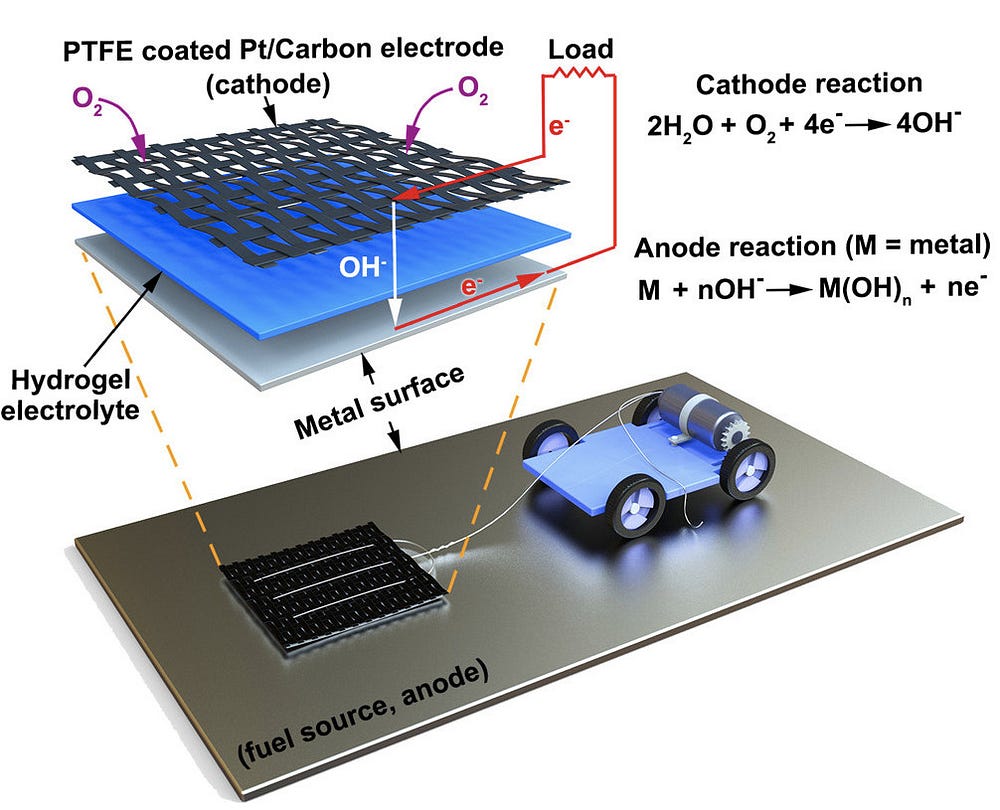University of Pennsylvania, April 6, 2020
The metal-air scavenger developed by researchers at the University of Pennsylvania works like a battery by providing power by repeatedly breaking and forming a series of chemical bonds and a harvester as the power is supplied by energy in the chemical bonds in metal and air surrounding the metal-air scavenger. They showed that a range of hydrogel electrolyte compositions can be combined with air cathodes to extract 159, 87, and 179 mAh/cm2 capacities from aluminum, zinc, and steel surfaces at up to 130, 81, and 25 mW/cm2 power densities, which exceed the power density of the best energy harvesters by 10×. When moving across a metal surface, metal scavenging exceeds the energy densities of lithium-ion and metal–air batteries by 13× and 2×. Metal scavenging is especially beneficial for small robots and electronics, whose size and performance are severely limited by the low energies provided by microenergy storage technologies…read more. TECHNICAL ARTICLE

Credit: University of Pennsylvania’s School of Engineering and Applied Science